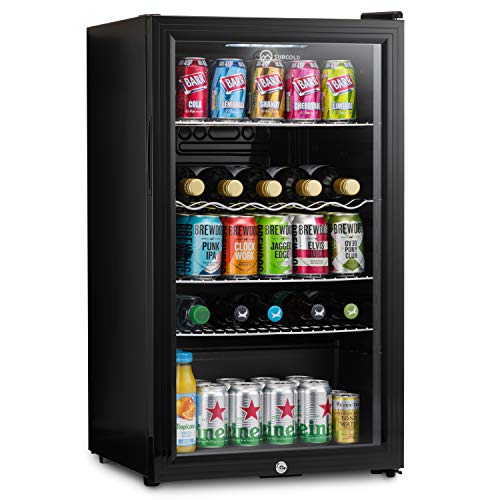Why Nobody Cares About Commercial Coolers
The Role and Evolution of Commercial Coolers in the Modern Marketplace
In the busy landscape of modern commerce, the role of commercial coolers can not be overstated. These essential tools are the backbone of numerous markets, from supermarkets and corner store to restaurants and health care facilities. This article dives into the significance of commercial coolers, their types, improvements, and the effect they have on company operations.
Introduction to Commercial Coolers
Commercial coolers, also understood as commercial refrigerators, are created to preserve a constant and regulated temperature level environment for the storage of perishable products. Unlike family refrigerators, commercial coolers are developed to hold up against heavy usage and are equipped with functions that guarantee reliability and performance in high-demand settings. They are crucial for preserving the quality and safety of food, beverages, and other temperature-sensitive items.
Types of Commercial Coolers
Cooled Display Cases
- Vertical Coolers: Commonly found in grocery stores and benefit shops, these units enable customers to view and select products easily.
- Horizontal Coolers: Often utilized for showing drinks and small items, these systems can be either open or with glass doors.
Walk-in Coolers
- Walk-in Freezers: Large, room-sized systems created for bulk storage of frozen items.
- Walk-in Coolers: Similar to walk-in freezers but keep a higher temperature, suitable for storing dairy, produce, and other perishables.
Undercounter Coolers
- Bar Coolers: Compact units created to fit under bar counters, perfect for keeping drinks and mixers.
- Preparation Coolers: Used in kitchen areas for keeping components and prepared foods.
Bottle Coolers
- Single-Door Coolers: Ideal for small areas, these systems are typically utilized in offices and small retail settings.
- Multi-Door Coolers: Larger systems with numerous compartments, appropriate for high-volume sales environments.
Reach-in Coolers
- Single-Door Reach-ins: Compact and efficient, these units are best for small companies and restaurants.
- Double-Door Reach-ins: Offer more storage area and appropriate for medium-sized operations.
Advancements in Commercial Coolers
The technology behind commercial coolers has actually advanced considerably throughout the years, resulting in more effective and sustainable options. Some significant developments consist of:
- Energy Efficiency: Modern coolers are designed to take in less energy, lowering functional expenses and environmental impact. Frydge like LED lighting, high-efficiency compressors, and advanced insulation add to this.
- Smart Technology: Many commercial coolers now feature clever functions, such as remote monitoring, temperature level informs, and automated defrost cycles. These technologies improve operational performance and item security.
- Eco-Friendly Refrigerants: The use of environmentally friendly refrigerants, such as R-290 (lp) and R-600a (isobutane), is becoming more prevalent, reducing the carbon footprint of commercial coolers.
- Personalization: Manufacturers are providing more adjustable choices, allowing organizations to tailor their coolers to particular requirements, such as size, style, and features.
Effect on Business Operations
Commercial coolers play an essential function in a number of aspects of business operations:
- Product Preservation: By maintaining optimum temperature conditions, coolers guarantee that products stay fresh and safe for usage, decreasing waste and improving customer complete satisfaction.
- Functional Efficiency: Efficient cooling systems decrease downtime and maintenance expenses, enabling companies to concentrate on other vital operations.
- Customer Experience: Well-maintained and aesthetically pleasing coolers can enhance the shopping experience, encouraging consumers to make purchases.
- Regulatory Compliance: Commercial coolers assist companies satisfy health and wellness guidelines, making sure compliance and avoiding charges.
FAQs
Q: What is the difference between a commercial cooler and a home fridge?
- A: Commercial coolers are created for heavy usage and are developed with more robust materials and advanced features to guarantee dependability and performance in high-demand settings. Household refrigerators, on the other hand, are developed for personal usage and are not equipped to manage the same level of usage or storage capacity.
Q: How can I ensure my commercial cooler is energy efficient?
- A: To ensure energy effectiveness, pick a cooler with an Energy Star rating, usage LED lighting, maintain routine cleansing and upkeep, and think about smart features like remote monitoring and automated defrost cycles.
Q: What are the advantages of using environment-friendly refrigerants in commercial coolers?
- A: Eco-friendly refrigerants, such as R-290 and R-600a, have a lower global warming capacity (GWP) and ozone deficiency potential (ODP) compared to traditional refrigerants. This decreases the environmental effect of commercial coolers and helps companies fulfill sustainability objectives.
Q: How often should I clean up and maintain my commercial cooler?
- A: Regular cleaning and maintenance are crucial for the optimal performance of commercial coolers. It is suggested to clean up the cooler at least as soon as a month and carry out a comprehensive upkeep check every 6 months. This includes examining the seals, cleaning up the condenser coils, and ensuring the temperature settings are precise.
Commercial coolers are important in the modern marketplace, providing essential services that make sure the quality and safety of perishable products. With developments in technology and a growing concentrate on sustainability, these units are becoming more effective and eco-friendly. By understanding the different kinds of commercial coolers and their impact on company operations, owners and supervisors can make educated choices that benefit both their operations and the environment.
